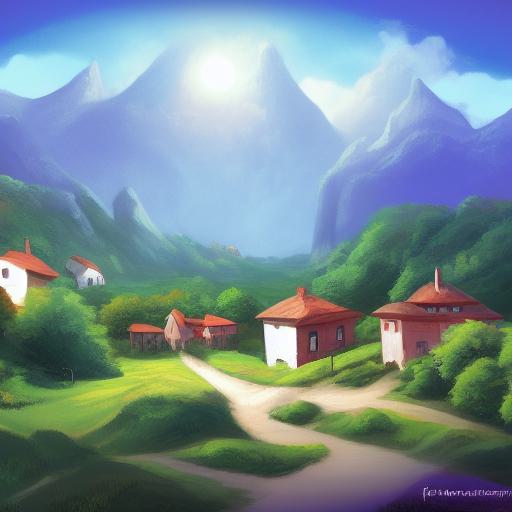Landscape digital art
Landscape digital art refers to a form of art where digital tools such as a computer or tablet are used to create images of natural scenery, such as mountains, forests, oceans, or other outdoor environments. Digital artists can use a variety of software tools to create digital landscapes, such as Adobe Photoshop, Corel Painter, or Autodesk Sketchbook, among others.
One of the advantages of digital art is the ability to quickly and easily experiment with different techniques and styles. Digital artists can create multiple versions of the same artwork, try out different color schemes or brush styles, and undo or redo any mistakes with ease. They can also use layers to add depth and complexity to their work, and manipulate individual elements within the image to achieve their desired result.
Creating digital landscape art requires both technical skill and artistic creativity. Digital artists must have a strong understanding of composition, color theory, and lighting, as well as the ability to use digital tools to achieve their vision. They can start with a sketch or rough outline of their landscape, and then gradually build up the details, textures, and colors until the final image is complete.
Different styles of digital landscape art
There are many different styles of digital landscape art, ranging from hyper-realistic depictions of nature to more abstract or surreal interpretations. Some digital artists may specialize in creating landscapes for video games or movies, while others create standalone pieces that can be displayed in galleries or sold as prints.
Overall, digital landscape art is a fascinating and dynamic form of artistic expression that combines technical skill with creative vision to produce stunning images of the natural world.
AI-generated art
Artwork generated by artificial intelligence is referred to as AI-generated art. This innovative technique allows for quick and efficient image creation, offering several advantages over traditional art methods. AI-generated art allows for greater flexibility to experiment with diverse styles and techniques and the ability to design artworks that meet specific requirements. Additionally, this type of art promotes diversity and inclusivity in the art industry, providing a platform for artists from various backgrounds to express their unique experiences and perspectives.
To incorporate AI-generated art into their projects, designers can utilize online tools such as Visual Paradigm Online. Additionally, artists can create their own AI-generated art and explore the limitless creative possibilities that this technology provides through websites such as Stable Diffusion, Midjourney, and Dalle 2.
How to create this prompt?
To write a prompt for an AI-generated image, it is important to provide specific and detailed instructions that will guide the artificial intelligence algorithm to create the desired image. The above prompt provides a clear description of the digital painting that is being requested.
The prompt specifies that the image should depict a small village with mountains in the background, which creates a clear visual narrative for the AI to follow. Additionally, the prompt notes that the painting is a concept art piece by Franz Hegi, who is known for creating highly detailed and intricate images.
The prompt also mentions that the painting is a pixiv contest winner, which implies that the image should be of high quality and aesthetically pleasing. The use of the term “conceptual art” further emphasizes that the image should be creative and visually striking.
Finally, the prompt notes that the image should be a “distant village background,” which sets the scene for the image and creates a sense of depth and perspective. This prompts the AI to focus on creating a background image that is rich in detail and creates a sense of immersion.
Overall, the prompt provides clear instructions for the AI to follow, while also encouraging creativity and visual flair. By including specific details and references, the prompt helps the AI generate an image that is both technically accurate and visually striking.


